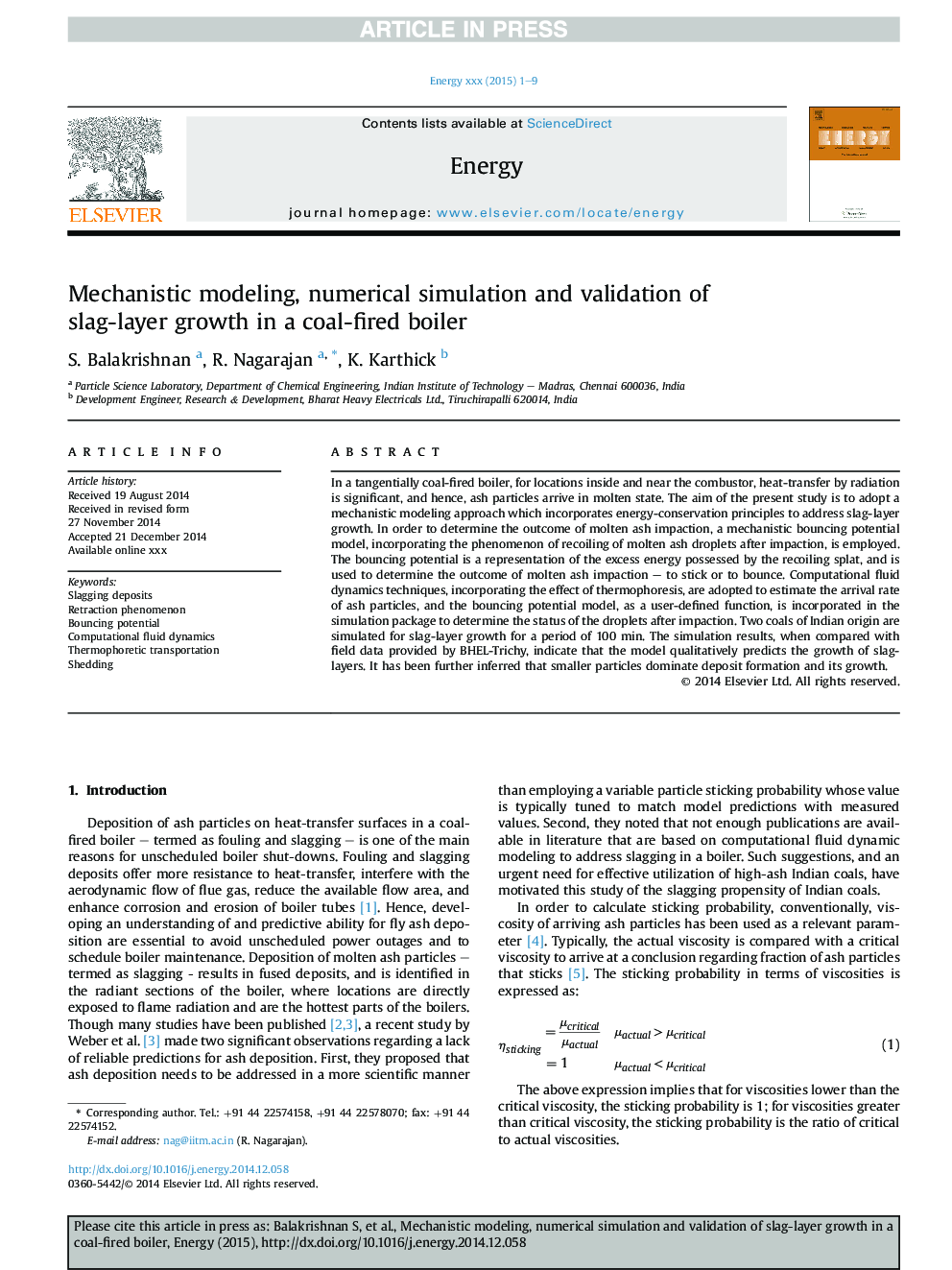| Article ID | Journal | Published Year | Pages | File Type |
|---|---|---|---|---|
| 8075715 | Energy | 2015 | 9 Pages |
Abstract
In a tangentially coal-fired boiler, for locations inside and near the combustor, heat-transfer by radiation is significant, and hence, ash particles arrive in molten state. The aim of the present study is to adopt a mechanistic modeling approach which incorporates energy-conservation principles to address slag-layer growth. In order to determine the outcome of molten ash impaction, a mechanistic bouncing potential model, incorporating the phenomenon of recoiling of molten ash droplets after impaction, is employed. The bouncing potential is a representation of the excess energy possessed by the recoiling splat, and is used to determine the outcome of molten ash impaction - to stick or to bounce. Computational fluid dynamics techniques, incorporating the effect of thermophoresis, are adopted to estimate the arrival rate of ash particles, and the bouncing potential model, as a user-defined function, is incorporated in the simulation package to determine the status of the droplets after impaction. Two coals of Indian origin are simulated for slag-layer growth for a period of 100Â min. The simulation results, when compared with field data provided by BHEL-Trichy, indicate that the model qualitatively predicts the growth of slag-layers. It has been further inferred that smaller particles dominate deposit formation and its growth.
Keywords
Related Topics
Physical Sciences and Engineering
Energy
Energy (General)
Authors
S. Balakrishnan, R. Nagarajan, K. Karthick,
